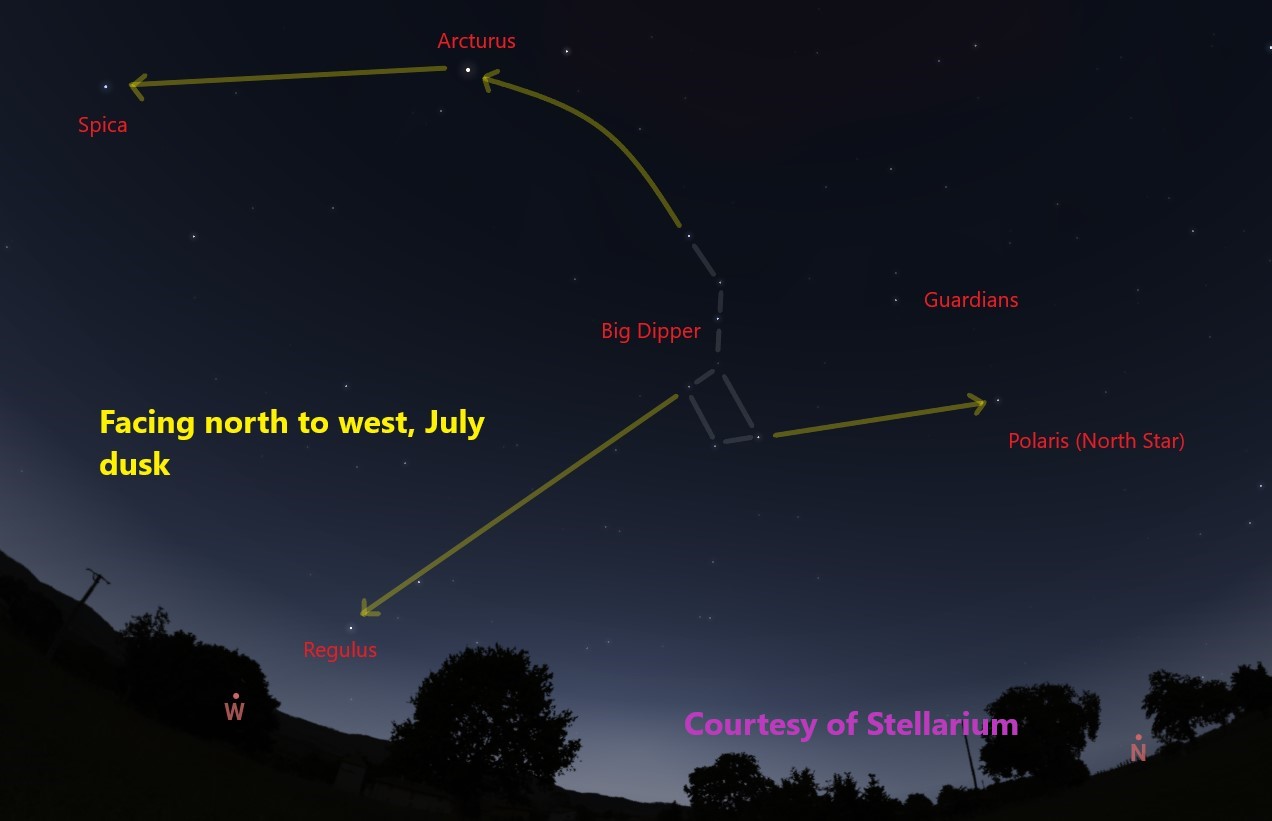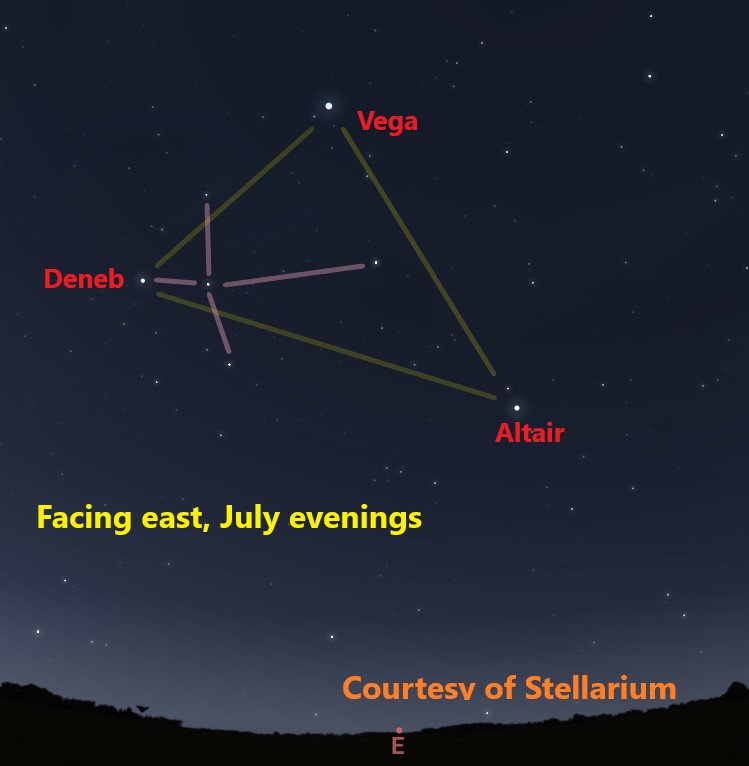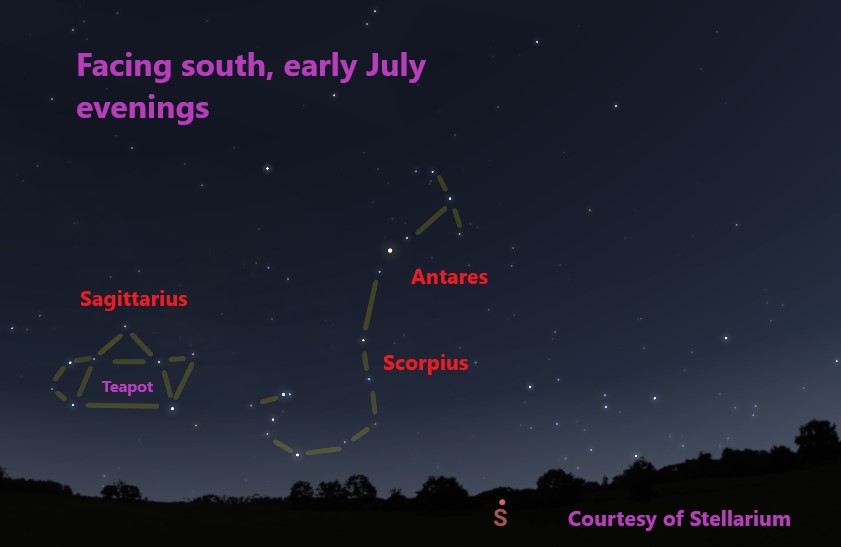The Stellar Seven
July is the seventh month of the year, and by coincidence, it also features seven first magnitude stars adorning its evening skies. It isn’t hard to find all of them this month.
Let’s begin by facing north. The Big Dipper, part of the larger constellation Ursa Major, appears to hang from its handle at this time of year. As is well known, the two stars in the bowl farthest from the handle point to Polaris, the North Star. The sky appears to rotate around this star, which shines fairly brightly at second magnitude, with the two “Guardian” stars appearing above Polaris at this time of year. The Guardians form part of the bowl of the Little Dipper, which is too faint to see well unless your skies are quite dark. Follow the arc of the Big Dipper’s handle to bright Arcturus, and then spike or speed on to Spica, in the southwestern sky during July’s early evenings. Although Arcturus looks about twice as bright as Spica, this is because it is much closer to us- 37 light years away as opposed to 250. You can use the two stars in the Big Dipper’s bowl to find Regulus, which is 79 light-years distant, so that the light left during about the middle of World War II. Look early on July evenings and find a spot with an open view to the west in order to find Regulus.
Three more bright stars form the huge and famous Summer Triangle. Vega, with a distinct bluish white tint, is the brightest and nearest of the three, with Altair in second place, to the lower right. Both of these two stars are relatively nearby at 25 and 17 light years away, respectively. The star to the lower left is dimmer but still quite bright, but is estimated to be a staggering 2,600 light years distant. Deneb is the brightest star in the constellation of Cygnus, the Swan. It is easy enough to make out the stick figure of a bird from these stars, but even more easily the Northern Cross. If Deneb were as close to us as Altair, it would shine about as brightly as a half moon in the sky!

Last, but certainly not least, is the enormous red supergiant Antares, the only bright star in the south at this time of night and time of year. Like more famous Betelgeuse, a fixture of the winter sky, if placed in the center of our solar system, Antares’s outer edge would extend between the orbits of Mars and Jupiter. Compare Antares to Vega, very high in the east. Their color difference is obvious to see. Once you have found Antares, try to trace out the fishhook shape of the constellation Scorpius- binoculars might be needed to glimpse the lower stars in the tail, close to the southern horizon. To the left is the “teapot” shaped constellation Sagittarius, complete with a lid, handle, and spout.

Two special events are planned for July, as part of our Gateway to the Stars program. The annual Kids Explorer Night will take place on the evening of July 10. Children 5-12 are invited to work with our Sky Ranger and earn the Junior Ranger Night Explorer patch. In addition, a very limited number of kids can build and bring home their very own Galileoscope, a small, portable instrument that is based on the one created by the famous astronomer. Reserve your place in these programs by e-mailing our Sky Ranger at richard_fefferman@nps.gov.
